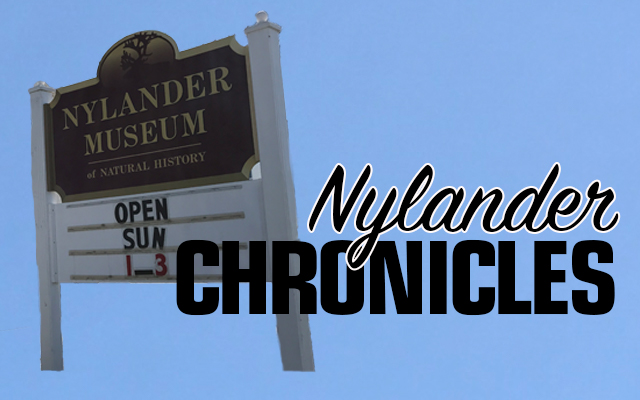The Nylander Museum has a collection of Maine tourmalines in many colors and sizes. Tourmaline is a mineral found on every continent and is known for its variety of colors and transparency.
Tourmaline in jewelry is considered a semiprecious stone; it is an alternate birthstone for October. Black is the most common color. Watermelon tourmaline occurs when green and pink appear in the same crystal. Rubellite, a saturated pink tourmaline, is the most rare and sought after and is more expensive than rubies. Today, the Russian crown jewels, once considered to contain rubies, are believed to have high-quality tourmalines.
In Maine, tourmaline is mined in the western mountains. Examples of areas associated with certain colors of the mineral are: Rumford – black, pink, green; Paris – black, blue-green; Newry – green, black, blue-green, watermelon; and Greenwood – black, green.
Scientifically, tourmaline is a silicate composed of silicon, oxygen and at least one metal and is a high-pressure, high-temperature material capable of carrying an electric charge.
From ancient to modern times, spiritual, healing and protective virtues are associated with the mineral and in some spiritual traditions tourmaline is revered as a “magic” stone. Many health benefits are anecdotally reported. Tourmaline is said to boost the immune system, improve circulation, help the digestive system, strengthen teeth and bones, reduce stress, treat trauma and promote healthy mood, for starters.
According to one mine website, quality gems from the area are becoming increasingly scarce and future supplies of Maine tourmaline are uncertain. If you seek tourmaline locally, you will likely find stones from other countries. Tourmaline mined in Maine and created into jewelry is mostly carried by select southern Maine jewelers.
If you are interested in an adventure, some Maine tourmaline mines have rockhounding (digging in the dumps) and field trip opportunities. A story of the great tourmaline find of 1821 on Mount Mica in Paris is told on one of the mining websites. This was the first source of tourmaline in the United States.
This column is the work of members of the Nylander Museum’s Board of Trustees.








